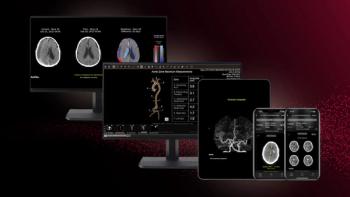
Interstitial Lung Abnormalities Tied to Reduced Lung Capacity
HealthDay News - Study also finds abnormalities on scans tied to lesser amount of emphysema among smokers
HealthDay News - Interstitial lung abnormalities on high-resolution computed tomographic (HRCT) scans appear to be associated with reduced total lung capacity and a lesser amount of emphysema among smokers, according to a study published in the March 10 issue of the New England Journal of Medicine.
George R. Washko, MD, of Brigham and Women's Hospital and Harvard Medical School in Boston, and colleagues looked for interstitial lung abnormalities in 2,416 of 2,508 HRCT scans of the lung obtained from a cohort of smokers.
Interstitial lung abnormalities were found in 8 percent of the scans. The investigators found that interstitial lung abnormalities were associated with reduced total lung capacity (−0.444 liters) and a lower percentage of emphysema defined by lung-attenuation thresholds of −950 Hounsfield units (−3 percent) and −910 Hounsfield units (−10 percent). The investigators also found that smokers with interstitial lung abnormalities were more likely to have a restrictive lung deficit (total lung capacity <80 percent of the predicted value; odds ratio [OR], 2.3) and were less likely to meet the diagnostic criteria for chronic obstructive pulmonary disease (COPD; OR, 0.53), as compared with those without abnormalities. The effect of interstitial lung abnormalities on emphysema and total lung capacity was dependent on COPD status.
"We have found that as compared with smokers without interstitial lung abnormalities, smokers with interstitial abnormalities on HRCT, particularly smokers with COPD, have a reduced total lung capacity and a lesser amount of emphysema," the authors write.
Several study authors and the editorial author disclosed financial relationships with various pharmaceutical and/or medical device companies.
Copyright © 2011
Newsletter
Stay at the forefront of radiology with the Diagnostic Imaging newsletter, delivering the latest news, clinical insights, and imaging advancements for today’s radiologists.




























